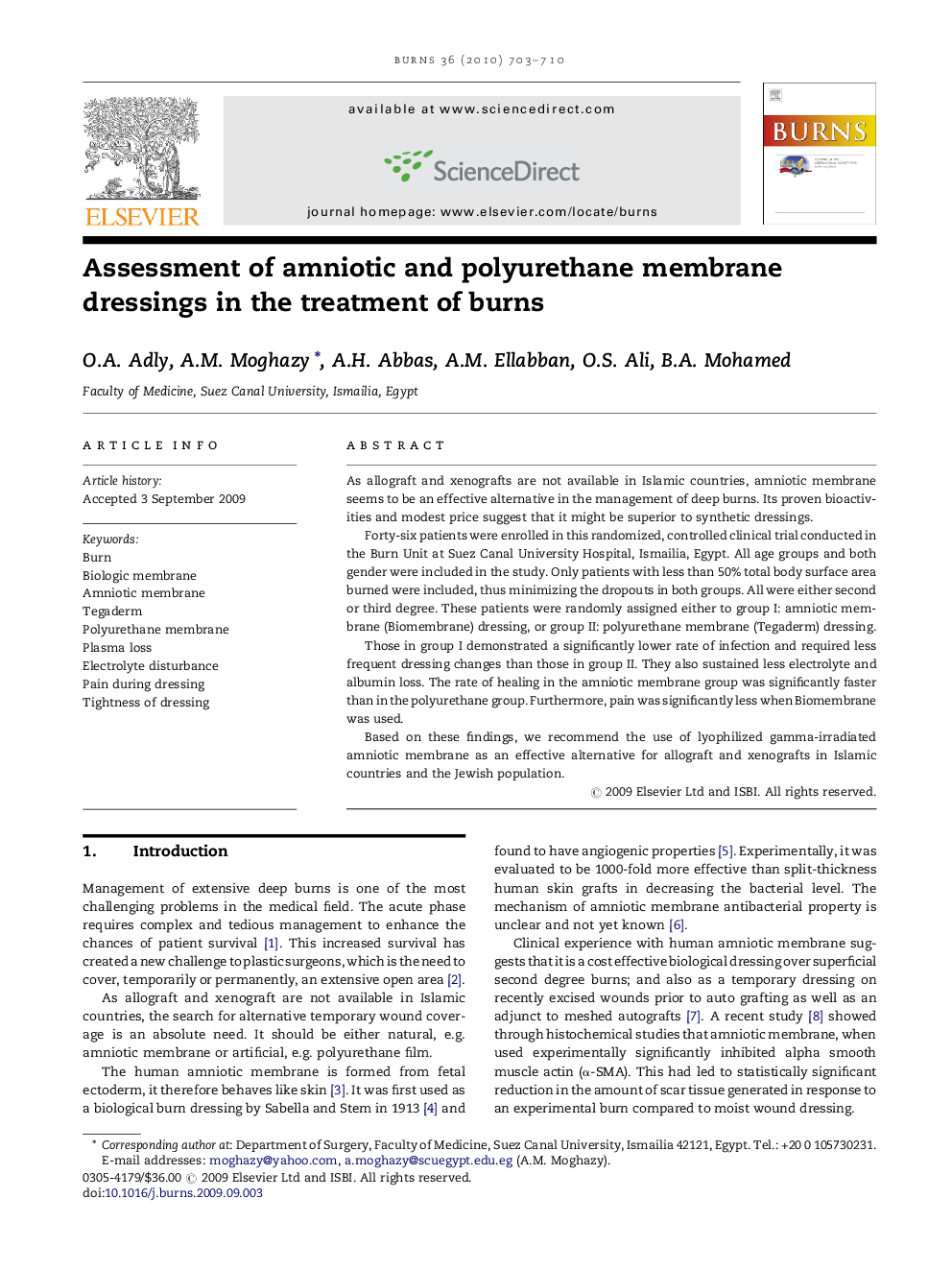| Article ID | Journal | Published Year | Pages | File Type |
|---|---|---|---|---|
| 3105667 | Burns | 2010 | 8 Pages |
As allograft and xenografts are not available in Islamic countries, amniotic membrane seems to be an effective alternative in the management of deep burns. Its proven bioactivities and modest price suggest that it might be superior to synthetic dressings.Forty-six patients were enrolled in this randomized, controlled clinical trial conducted in the Burn Unit at Suez Canal University Hospital, Ismailia, Egypt. All age groups and both gender were included in the study. Only patients with less than 50% total body surface area burned were included, thus minimizing the dropouts in both groups. All were either second or third degree. These patients were randomly assigned either to group I: amniotic membrane (Biomembrane) dressing, or group II: polyurethane membrane (Tegaderm) dressing.Those in group I demonstrated a significantly lower rate of infection and required less frequent dressing changes than those in group II. They also sustained less electrolyte and albumin loss. The rate of healing in the amniotic membrane group was significantly faster than in the polyurethane group. Furthermore, pain was significantly less when Biomembrane was used.Based on these findings, we recommend the use of lyophilized gamma-irradiated amniotic membrane as an effective alternative for allograft and xenografts in Islamic countries and the Jewish population.
